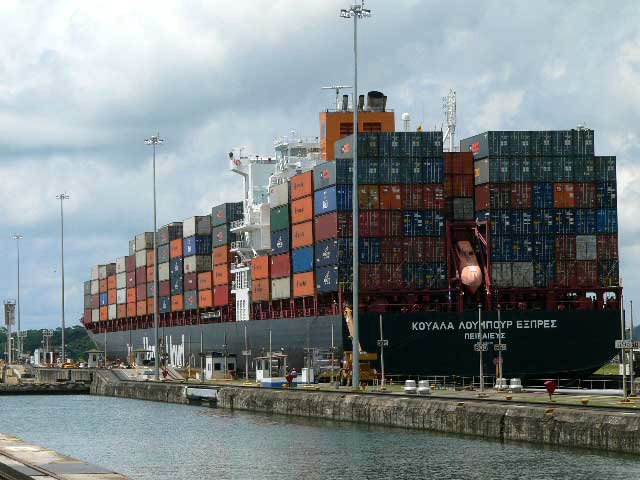 |
| Photo credit: Panama Canal History Museum |
A global public-private alliance is expanding the Panama canal to allow larger container ships to pass through. This will permit these massive ships arriving from Asia to call on ports on the US East Coast. At the moment, they dock on the West Coast and the cargo is shipped overland by road and rail.
This raises a question: if this commerce produces so much wealth, why should governments spend taxpayer money on these projects? Couldn't we just let the market take care of it? And if the market won't pay for it, is it something that taxpayers should pay for anyway?
Read the article, share your opinion and explain your answer for participation credit.
This entire project is a great example of globalization and international market cooperation. Panama is obviously in favor of this taxing and spending because of the revenue it will make over the subsequent years in tolling. I would think that any state would be in favor of using tax money to support a more cost-effective shipping route.
ReplyDeleteDomestically I think the biggest issue here is who's tax money is being spent. State governments on the East coast are using tax money to bring their harbors and other transportation means up to par with what the expected cargo ships need to unload. As stated in the article, the sheer size of the ships will undoubtedly bring increased revenue, from about 4500 containers per ship to roughly 12000 (+266%). West coast ports seem to either have the choice to ante up to accommodate these new ships, or lose a significant proportion of their future income to East coast ports.
These post-Panamax ships are making trade more efficient, and could certainly benefit economic activity in the long run for states who spend. While individual actors in the market might be able support these projects on their own, involvement by the government would increase the attractiveness for investment and bring in more supporting businesses like transportation and middle-man sales companies.
On another note, this has the possibility to hurt the land transportation industry if an imbalance of trade distribution is created between the coasts of the U.S.
Overall I think it would be a wise investment to keep up with modern international trade progress. Adapt or die.
-Campbell
I also read this article from August: http://www.nytimes.com/2012/08/21/us/us-ports-seek-to-lure-big-ships-after-panama-canal-expands.html?pagewanted=all, which brings to light the issue of keeping expecations in check. It argues that too many groups (regions within the US, countries, companies) are betting they will realize big time profit from their big time investments, when many on-lookers fear there will be a limited number of "winners" in this race to update harbors.
ReplyDeleteStill, if multimillion(billion) dollar port projects really will grow the job market and help bring more revenue into the economy, then surely these projects make good use of taxpayers' dollars. Ports in the East Coast and Gulf Coast will be able to better compete for business with the West Coast (while the West Coast still has quite a headstart to remain competitive), and the Midwest may even realize a new gateway. This competition among regions and different trade industries seems economically healthly and promising. NBC News reports, "The U.S. Department of Transportation’s Maritime Administration expects port container traffic to double by 2020 and triple by 2030. The effects of this increase in trade will inevitably trickle down, creating millions of jobs and billions in tax revenues for states throughout the country."
It seems to boil down to whether or not these billion dollar investments will truly pay off - something nobody seems equipped to predict. Certainly, there is potential for great economic reward and a shift from the West Coast dominating the shipping inudstry of the US to the East being a stronger competitor. So, all in all, the expansion of the Panama Canal seems to be positive, and it is logical that the US maritime industry arms itself to be competitive in the changing means of trade. What we will have to wait to see is whether or not the level of investment in updating American harbors is appropriate.
Thanks for your contributions. Very thoughtful. Would love to hear what the rest of the class thinks.
ReplyDelete